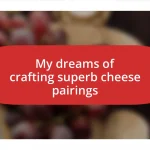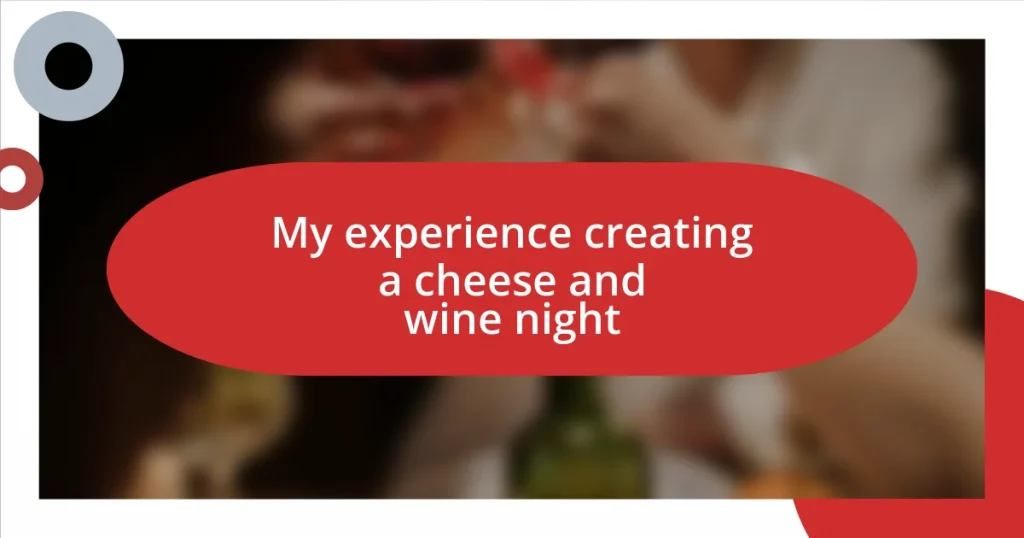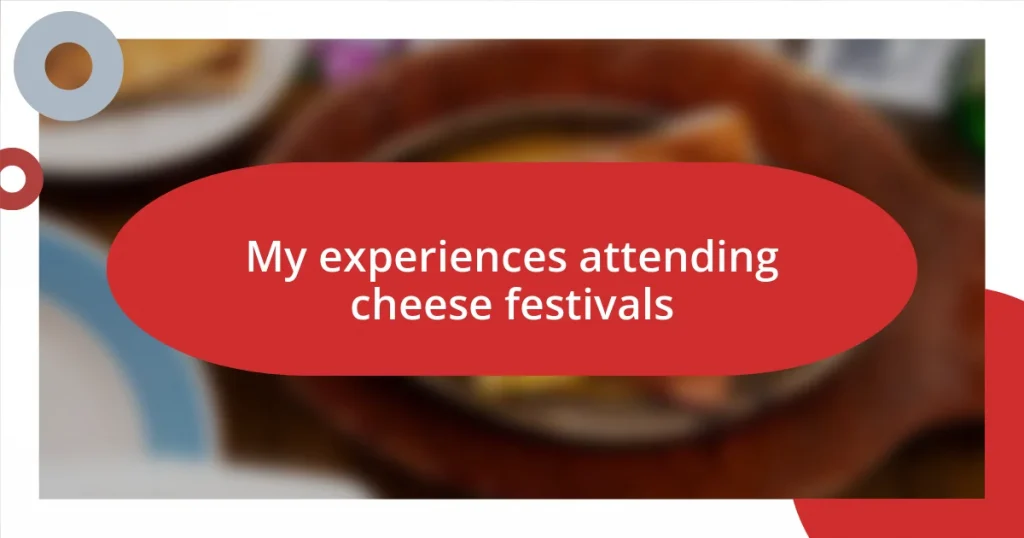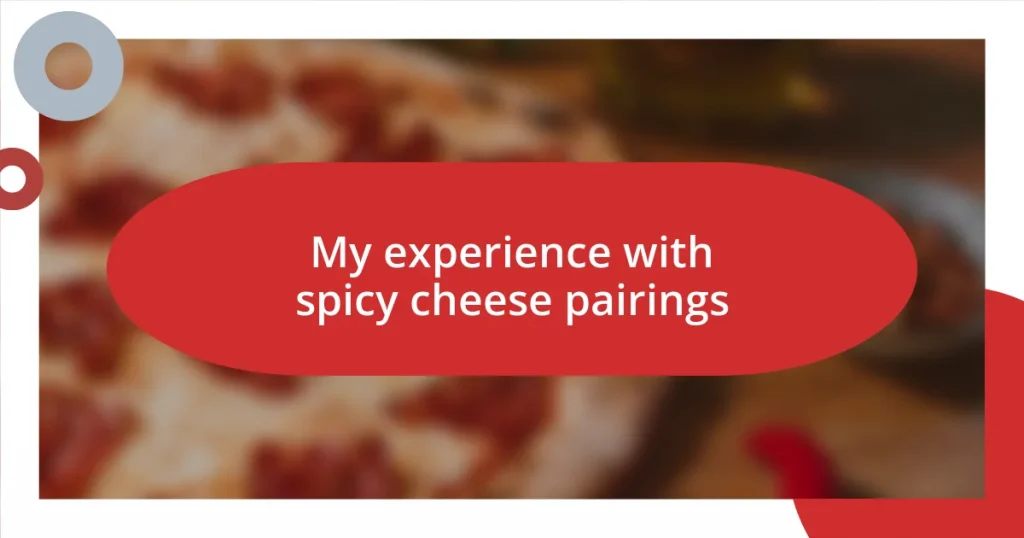Key takeaways:
- Choose a variety of cheeses with contrasting textures and flavors, enhancing the visual appeal for a memorable presentation.
- Select complementary wines that enhance the cheese flavors, creating delightful pairings and encouraging guest discovery.
- Set the perfect ambiance with appropriate lighting, music, and arrangement to foster a relaxed atmosphere and engaging conversations.
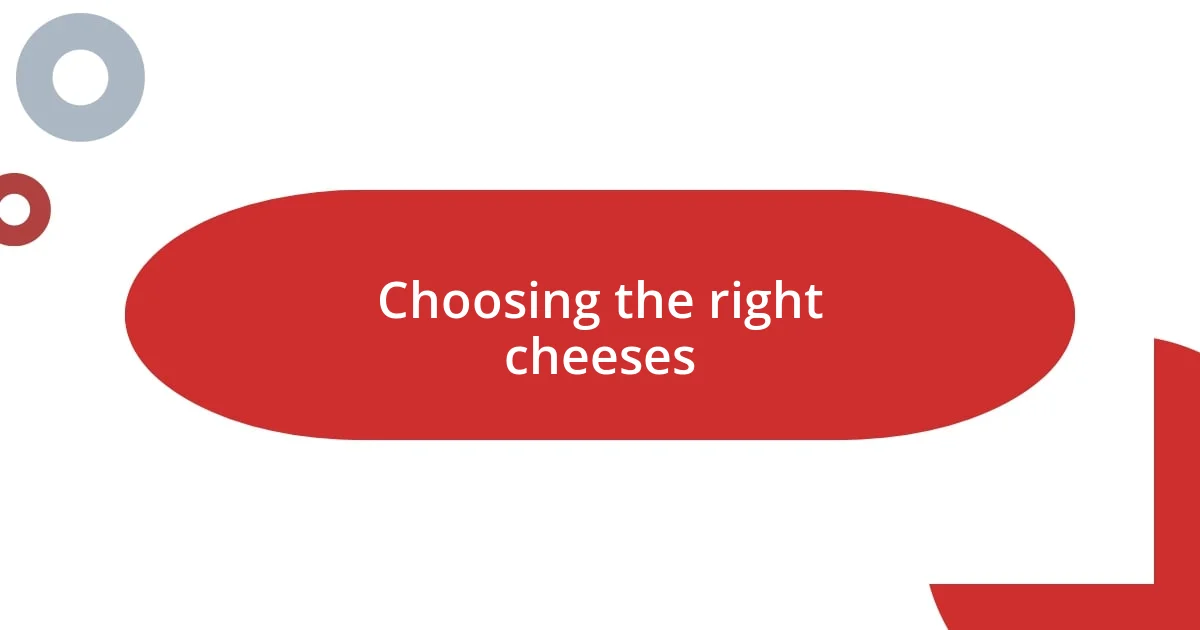
Choosing the right cheeses
Choosing the right cheeses can feel overwhelming, but I’ve found that a little planning makes all the difference. For my last cheese and wine night, I aimed for a range of textures and flavors, selecting a creamy brie, a sharp cheddar, and a tangy goat cheese. It created a delightful contrast that had my friends buzzing with excitement—who doesn’t enjoy a bit of contrast on their plates?
One of my favorite moments was watching my guests debate which cheese paired best with the wine selections. We settled on a rich Merlot with the cheddar, and oh, what a match! There’s something incredibly satisfying about discovering those perfect pairings—like little sparks of joy on a platter.
When selecting cheeses, I always think about the variety, not just in taste but also in appearance and aroma. Have you ever considered how the visual aspect can impact the overall experience? The creamy white of brie against the deep orange of cheddar made for an Instagram-worthy spread that my guests couldn’t resist. It’s those simple details that elevate the evening into something memorable.
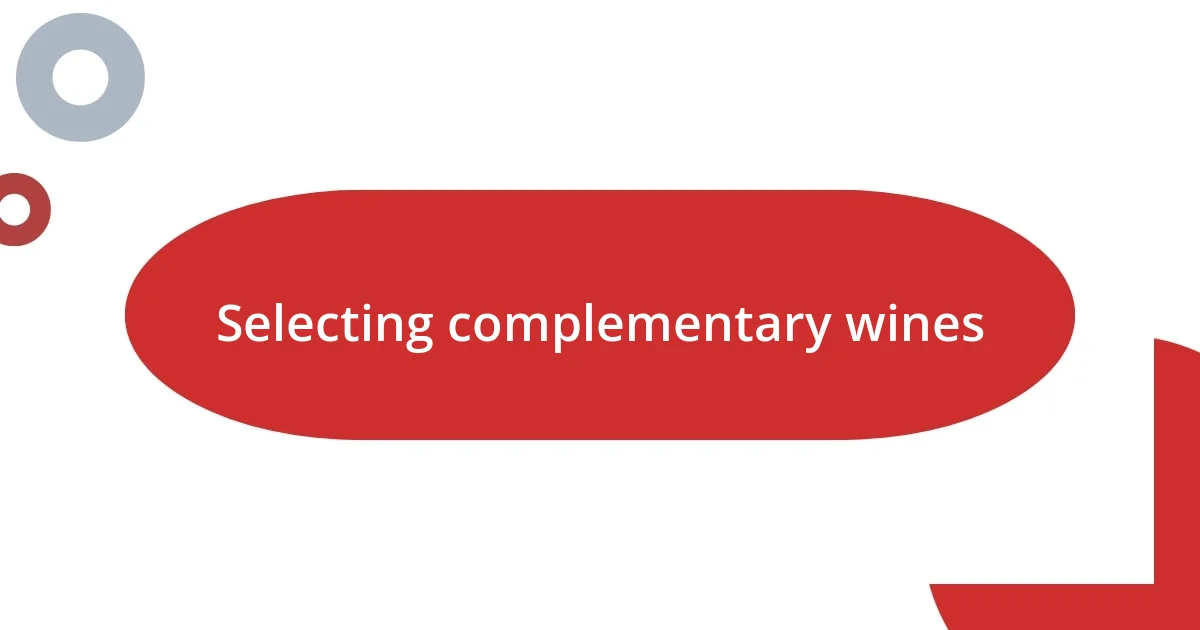
Selecting complementary wines
Selecting wines that complement your cheese selection can truly elevate your cheese and wine night. Over the years, I’ve discovered that understanding basic flavor profiles can guide us in making wise choices. For instance, I’ve often reached for a crisp Sauvignon Blanc when serving tangy goat cheese—its zesty citrus notes really highlight the cheese’s flavor. It’s like creating a vibrant dialogue between the wine and cheese, each enhancing the other’s best qualities.
Here are a few tried-and-true pairings that have delighted my guests:
– Brie: Pairs wonderfully with a fruity Chardonnay. Its buttery texture mirrors the richness of the cheese.
– Cheddar: Opt for a bold Cabernet Sauvignon, which stands up to the sharpness beautifully.
– Gorgonzola: I recommend a dessert wine like a Sauternes. The sweetness contrasts the cheese’s saltiness, creating a surprisingly delightful experience.
– Manchego: A spicy Tempranillo enhances the nutty flavors of this Spanish cheese, making it a crowd favorite in my gatherings.
I fondly recall an evening where I served a local Riesling with a blue cheese. The combination surprised some guests, but once they tasted it, their expressions shifted from skepticism to pure enjoyment. Those moments of discovery—watching someone’s face light up when they find a pairing they love—are what make these evenings so special.
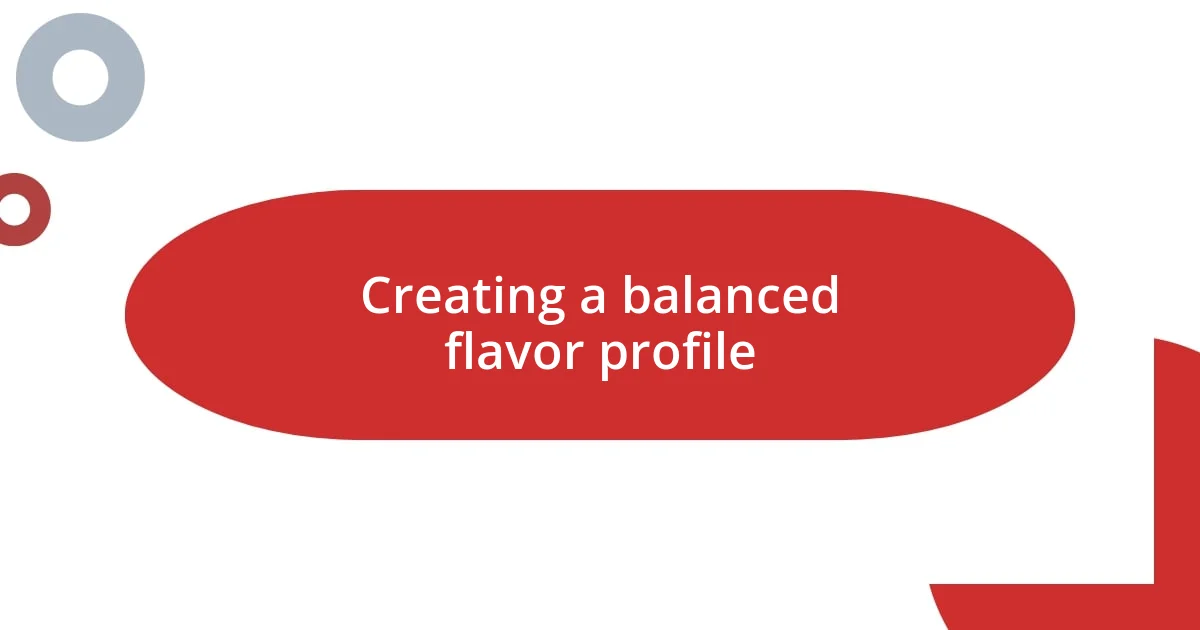
Creating a balanced flavor profile
Creating a balanced flavor profile is all about harmony. I remember a night when I served a combination that was unexpectedly magical: a soft Roquefort blue cheese with a sweet Moscato. The creamy tanginess of the cheese melded beautifully with the wine’s fruity notes, creating a delightful balance that left my guests raving. Have you ever experienced a pairing that took you by surprise? It’s like discovering a hidden treasure on your plate.
When aiming for balance, I often think about contrasting flavors and textures. For example, I paired a nutty Gruyère with a crisp Pinot Grigio at one gathering. The wine’s acidity cut through the cheese’s richness, enhancing both elements. It’s enlightening to watch how the flavors interact and evolve—an experience that truly brings people together and sparks conversation.
Lastly, don’t forget to include a range of flavors in your cheese and wine selection. During one of my evenings, I offered a fruity Brie alongside a complex Syrah. The creamy texture complemented the wine’s bold spices, creating a perfect equilibrium. It’s crucial to consider these dynamics, as they can transform your night from ordinary to spectacular.
| Cheese Type | Wine Pairing |
|---|---|
| Roquefort | Moscato |
| Gruyère | Pinot Grigio |
| Brie | Syrah |
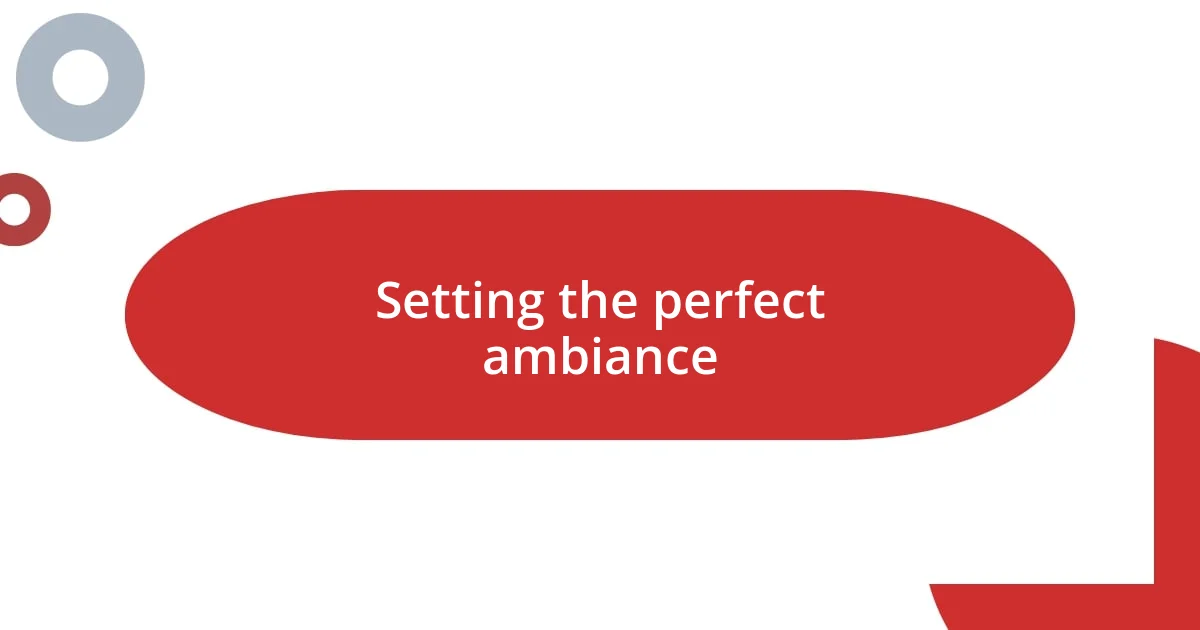
Setting the perfect ambiance
Setting the perfect ambiance for a cheese and wine night is crucial; it sets the tone for the evening. I remember one particular night when I dimmed the lights and lit a few candles. The soft glow created an inviting warmth that drew guests in like moths to a flame, making even the most introverted among us feel at ease. Have you ever noticed how lighting can transform a space? It’s almost magical.
Another essential aspect is the music selection. I often curate a playlist that enhances the experience—think mellow jazz or acoustic tunes that keep the mood relaxed yet engaging. One time, I played a lovely bossa nova track while serving rich brie, and it felt like we were transported to a cozy Parisian café. It’s amazing how the right soundtrack can elevate the flavors and conversations of the evening.
Finally, don’t underestimate the power of arrangement. I always take a moment to artfully place the cheese and wine on a beautiful board, incorporating fresh fruits, nuts, and aromatic herbs. Each element brings a visual appeal that sparks curiosity and excitement. During one gathering, a guest remarked on how the presentation made the evening feel special. Isn’t it incredible how the simplest details can enhance our enjoyment?

Preparing cheese and wine pairings
When preparing cheese and wine pairings, I find it’s essential to consider the overall experience you want to create. During one memorable evening, I decided to integrate seasonal elements into my selections. I paired a smoky cheddar with a vibrant Sauvignon Blanc. The cheese brought a depth that perfectly complemented the crisp and zesty nature of the wine. It’s moments like these that remind me how thoughtful pairings can engage the senses in ways that elevate the night.
I often recommend playing with textures to keep the palate intrigued. I recall a time I presented a creamy Camembert alongside a floral Chardonnay. The combination was a hit; the soft, buttery cheese paired beautifully with the wine’s acidity. This contrast not only added layers to the tasting journey but also sparked delightful discussions about flavor perceptions among my guests. Have you ever noticed how texture can lead to fascinating conversations around the table?
Lastly, I believe it’s important to guide your guests through the pairings. During another gathering, I shared little notes that explained each pairing’s unique qualities and suggested tasting orders. This added an element of discovery that thrilled everyone. It’s rewarding to see guests light up as they explore various flavor combinations; it fosters a deeper appreciation for the art of pairing. What’s your own experience with guiding friends through culinary adventures?
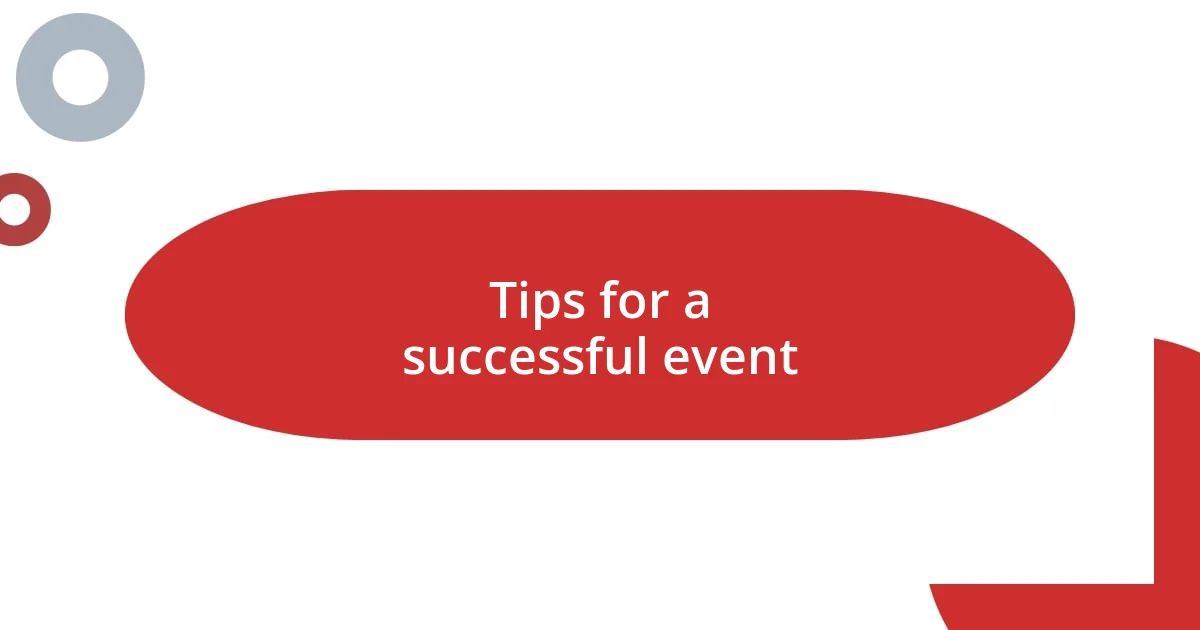
Tips for a successful event
One pivotal tip for a successful cheese and wine night is to encourage a relaxed vibe with open-ended discussions. I remember one occasion when I invited guests to share their favorite cheese and wine memories as we tasted our selections. The stories flowed like the wine, creating a unique bond among us. Isn’t it fascinating how personal anecdotes can turn a simple gathering into a heartfelt exchange?
Another key point is to be mindful of dietary preferences ahead of time. I once overlooked a guest’s dairy intolerance, which led to an awkward moment while pairing pungent blue cheese with a robust red. To avoid any hiccups, I now always ask about dietary restrictions when planning. It allows everyone to feel included and fully enjoy the experience. How often have you found yourself in a situation where a little planning could have gone a long way?
Lastly, consider mixing up the guest list a bit. I’ve seen how introducing friends from different circles can spark unexpected conversations and connections. During one event, a quiet guest bonded with an outspoken foodie over a shared love for artisanal cheeses, and their chemistry illuminated the whole night. Creating diverse groups can turn a fun evening into a memorable adventure. Have you ever thought about how the right mix of personalities can shape the atmosphere of your gathering?









